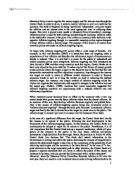While monetary policy decisions have an effect on the economy with a time lag, central banks have power over the future inflation rather than the current inflation. As an outcome of this aim, they develop inflation forecasts regularly and publish them. That is the reason of inflation-targeting regime being also commonly called as “inflation forecast targeting”. Through the same path, forecasts’ consistency, inflation target and finally the risk to deviate from the target are made clear to the public. The inflation target is around 2 per cent at an annual rate for Consumer Price Index.
In the case of a significant difference from the target, the Central Bank shall clarify the reasons in its reports to the public, following the said development in the framework of the inflation-targeting regime. In this situation, the Central Bank will continuously be obliged to report for its actions to the public. Nonetheless, it is of vital importance that the Central Bank sets up a separate mechanism, which will give details of the situation to the public in the case where inflation realizations demonstrate a high deviation from the target. Hence, the provision in Article 42 of the Central Bank Law declares that “The Bank shall submit information to the Government in writing and inform the public disclosing the reasons of incapability to achieve the determined targets in due time or the occurrence of the possibility of not achieving such targets and the measures to be taken thereof.” In the case of “a two-point deviation in the target-consistent path in either direction, the Central Bank will prepare a separate document that will serve to inform the public of the causes and measures to be taken, and also provide the Government with a written statement”.
Moreover, when the Monetary Policy Committee forecasts inflation to fall over the next year, they will result to a cut in interest rates in order to bring inflation back to its target level. In doing so, people will be encouraged to borrow more money from the banks. Regarding those who have mortgages, they will experience lower mortgage payments and have now more money to spend each month. The combination of these effects will have as an outcome the rise in the level of consumption and investment and thus the rise in Aggregate demand, as they are two of its main components. As a result of this, inflation level rises as well as the economic growth. This can be done as well for any forecasts of the Monetary Policy Committee where inflation is tend to rise but by increasing the interest rates. This will have as an outcome the rise of the cost to invest as well as to purchase any durable good. Investment and Consumption expenditure falls and therefore Aggregate Demand decreases.
Another significant instrument of the policy in the inflation-targeting regime is the minutes of the Monetary Policy Committee meeting. Inflation and Outlook Report, that has served a quite similar purpose, will be replaced by a dual reporting system. In other words, after the decision is made by Monetary Policy Committee, a report based on this decision will be issued. The other report reviewing the evaluations of the Monetary Policy Committee and its stance about the inflation outlook will be published within five working days after the meeting.
In the website of Norges Bank situated in Norway, it is claimed that the operational target is an inflation rate of 2.5 per cent over time while the most important monetary policy instrument is the key policy rate (sight deposit rate). It continues stating that the Monetary Policy Report includes an analysis of developments in inflation, output as well as the demand for the next three-year period. In addition to this, the main aspects of the analysis in the Monetary Policy Report are given to the Executive Board for discussion at a meeting about two weeks time earlier than the report is published. Regarding the analysis and discussion, the Executive Board examines the outcomes for future interest rate developments while adopting a monetary policy strategy, as well as alternative strategies. The decision for the adoption of a monetary policy strategy is made on the day when the report is published. Then, the strategy is relevant until the next report is made and is presented at the end of Section 1 in the Monetary Policy Report.
As mentioned in Svensson, (2007), until now, since its beginning in the early 1990s, inflation targeting has been a considerable success, as measured by the stability of inflation and the stability of the real economy. There is no support that inflation targeting has been harmful to growth, productivity, employment, or to other measures of economic performance. This success is both absolute and relative to alternative monetary-policy strategies, which include exchange-rate targeting or money-growth targeting. So far, there is no country that has abandoned inflation targeting after adopting it, or even expressed any regrets. For both industrial and non-industrial economies, inflation targeting has showed to be the most flexible and resilient monetary policy regime, while it has succeeded in surviving a number of large shocks and disturbances.
To conclude, taking all of the above aspects into account it can be said that inflation targeting is an economic policy in which a assesses and publishes a "target" rate and then tries to have an actual inflation close to the target through the use of changes and other monetary tools. Inflation targeting has been very successful and had been adopted by more than 20 industrialised and non-industrialised countries up to 2007.
BIBLIOGRAPHY:
Ball, Laurence M. and Sheridan, Niamh, 2003, Does Inflation Targeting Matter?, NBER Working Paper No. W9577
Bernanke, Ben S. and Frederic S. Mishkin, 1997, Inflation Targeting: A New Framework For Monetary Policy?, Journal of Economic Perspectives, Vol.11, pp 97-116
Lars E. O. Svensson, 2007, Inflation Targeting, 2nd version, Priceton University
Mishkin, Frederic S., 1999, International Experiences with Different Monetary Policy Regimes, Journal of Monetary Economics, Vol.43, pp. 579-605
1293 words







